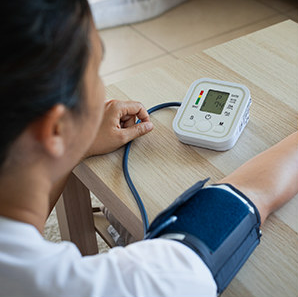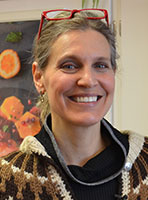Little Choices, Little Symptoms: Understanding Heart Disease in Women
Women are just as vulnerable to heart disease as men. In fact, heart disease is the leading cause of death among both genders in the US. Symptoms of heart disease in women can feel much different than for men. For example, only about 50 percent of women report having chest pains before or during a heart attack. Instead, women often experience less obvious heart attack warning signs, such as unusual fatigue or dizziness.
These seemingly little symptoms can signal a big problem. However, because women are generally focused on the health and safety of those around them rather than themselves, they often choose to ignore the more subtle signs of heart disease and heart attack. Making little choices, such as learning and listening to the “little” symptoms as well as seeking help could mean preventing a heart attack in women, getting earlier treatment for heart disease before it worsens, or getting critical medical care before it’s too late.
Know the Little Symptoms of Heart Disease in Women
In addition to chest pain and shortness of breath, which may signal a heart attack for both men and women, heart disease in women includes less-typical symptoms:
- Severe weakness and extreme fatigue
- Pain in the jaw, back, or neck
- Breaking out in a cold sweat or experiencing lightheadedness
- Nausea and vomiting
- Uncomfortable pressure, squeezing, fullness, or pain in the center of your chest that lasts more than a few minutes, or goes away and comes back
- Pain or discomfort in one or both arms or stomach
If you have any of these signs, call 9-1-1 and get to a hospital right away.
Choose to Know Your Risk
 Risk factors are similar for men and women, but high blood pressure, diabetes, obesity, depression, anxiety, and smoking are particularly strong risk factors for women. Knowing your total cholesterol, HDL (good) cholesterol, blood pressure, blood sugar, and body mass index is essential. Other considerations:
Risk factors are similar for men and women, but high blood pressure, diabetes, obesity, depression, anxiety, and smoking are particularly strong risk factors for women. Knowing your total cholesterol, HDL (good) cholesterol, blood pressure, blood sugar, and body mass index is essential. Other considerations:
- Are you taking hormone replacement therapy? This may increase your risk of heart disease and stroke, and should be stopped at the first sign of heart trouble.
- The number of risk factors you have multiplies your chances of developing heart disease: two risk factors increase heart disease four times while three risk factors increase it 10 times.
- One-third of all women ages 40 – 60 have one risk factor. Another third have two risk factors, and one out of every five women has three or more risk factors.
Education + Little Choices
The good news is the more a woman understands heart disease, the better chance she has of beating it. Some 80 percent of cardiac and stroke events may be prevented by learning about heart disease and taking steps to improve your heart health, according to the American Heart Association. It’s also important to make healthy lifestyle choices, including:
 Charlevoix Wellness Instructor Rachel Sytsma-Reed, PhD, shares heart-healthy cooking tips linked at left.
Charlevoix Wellness Instructor Rachel Sytsma-Reed, PhD, shares heart-healthy cooking tips linked at left.
- Quit Smoking. Smoking is very hard on your heart for a variety of reasons. Quit smoking and you’ll reduce your risk of coronary heart disease by 50 percent, according to the American Heart Association.
- Exercise on a regular basis. Visit Shape Up North to learn about the little choices you can make to fit exercise into your daily routine.
- Schedule an appointment with your family doctor to ask about your risk for heart disease, share your concerns, or even receive a referral to see a cardiologist from our award-winning heart care team.
- Eat well. Get heart-healthy cooking tips here: